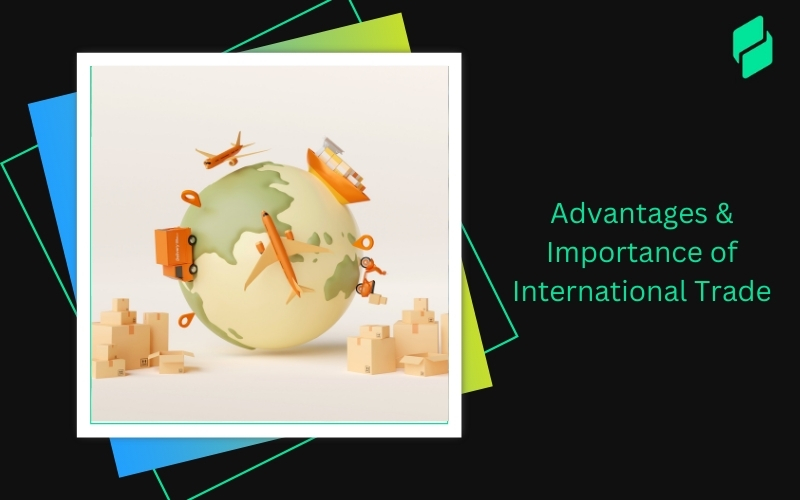Curious about international trade finance and its impact on global business?
From letters of credit to trade credit insurance, these methods streamline cross-border transactions and minimize risks for businesses.
In this article, we delve into the intricacies of ITF uncovering essential tools and strategies that drive seamless global trade.
Let’s dive in.
Optimize your business: use unlimited savings with Pazago fulfilled now!
Get Started ->Definition and Purpose of Trade Finance
In plain terms, trade financing is the solution to the question "Who pays for the goods and shipping?"
Businesses prefer not to pay big costs upfront, especially for manufacturing or high-value shipments. And suppliers don't want to risk not getting paid by new customers.
Trade financing works like this: importers get money to pay suppliers and repay the financier after selling their goods.
This helps have more inventory and make higher profits, especially when there's no existing supplier relationship. Payments are usually monthly or at set intervals, around 5% to 10% of the loan amount.
Purpose
- Trade finance bridges financial gaps in international trade transactions.
- It mitigates risks for all parties involved.
- Essential financial mechanisms like letters of credit and trade credit insurance are provided.
- The primary goal is to enable seamless and secure trade transactions globally.
- Trade finance contributes to economic growth and stability on a global scale.
Description of its Role in International Trade and Commerce

The role of trade finance in international trade and commerce is multifaceted and critical. Here's a breakdown of its key roles:
- Making Transactions Easy: It helps buyers and sellers across borders by providing financial tools to buy and sell goods and services globally.
- Reducing Risks: Trade finance tools like letters of credit and insurance help protect businesses from risks such as currency fluctuations and non-payment by buyers.
- Providing Funds: It offers financing options for businesses, especially smaller ones, to fund their international trade activities.
- Supporting Supply Chains: Trade finance helps keep the supply chain running smoothly by financing inventory, transportation, and other logistical needs.
- Boosting Economies: By enabling trade, it drives economic growth by creating jobs, enhancing productivity, and fostering global connections.
Now that we've unpacked the pivotal roles trade finance plays, let's zoom in on how it all comes to life.
How International Trade Finance Works?
Let's assume a situation: Meet Sam, a savvy importer deeply immersed in global trade, specializing in horse-shaped calculators for equestrian equations.
Armed with $20,000, he anticipates purchasing 1000 units. However, after factoring in global freight costs, customs fees, fulfillment expenses, Amazon charges, and other overheads, he can only afford 800 units, despite high demand.
Enter trade financing: Sam can now pay the deposit for his goods and secure payment release from the supplier through a third party.
Despite additional fees, this strategy empowers him to import 2,000 units, maximizing profits before settling dues with the trade financing company.
The overall trade finance serves to involve a third party in transactions, mitigating both payment and supply risks. It grants the exporter receivables or payment as per the agreement, while the importer may receive credit to fulfill the trade order.
Now, before we explore how these tools safeguard businesses against the unpredictable nature of international trade, let's meet the cast of characters making it all happen.
Understanding the intricacies can be challenging, but Pazago's suite of products simplifies these transactions for exporters and importers, making global trade more accessible.
Different Parties Involved in ITF
In the realm of foreign trade finance, numerous stakeholders play pivotal roles, each contributing to seamless transactions. Here are the key players:
- Importers: These entities purchase goods or services from foreign suppliers and manage shipping and payment processes.
- Exporters: Sellers of goods or services to foreign buyers, exporters receive payment for their offerings.
- Freight Forwarders: Specialists in global logistics, freight forwarders handle transportation, customs, insurance, and documentation.
- Banks: Essential in trade finance, banks process payments, issue letters of credit, and provide financing options for international trade.
- Insurance Providers: Offering trade credit insurance, insurers protect exporters from nonpayment risks and provide coverage for shipping-related damages.
Navigating the roles of different stakeholders is simpler with Pazago, as it connects SMEs with a comprehensive network of resources and expertise for efficient trade finance management.
With the stage set and key players introduced, it's time to dive into the toolbox that makes cross border trade finance tick.
Financial Instruments Used in International Trade Finance
While general funding is vital for solvency and liquidity, international trade financing offers crucial protection to buyers and sellers in global trade.
Here's a breakdown of the various types of cross border trade finance:
1. Letter of Credit (LC):
A document confirming fund availability, ensuring prompt payment for goods and services delivered, issued by a financial institution on behalf of the buyer.
2. Bank Guarantee
Accessible through domestic or foreign banks, offering security for importers or exporters unable to fulfill their obligations, enabling businesses to seek financial assistance.
3. Factoring
Provides immediate cash by selling account receivables to a third party at a discounted price, aiding businesses in need of quick funds.
4. Export Credit
Facilitates deferred payment options for foreign buyers, typically provided by export credit agencies to companies engaged in international business.
5. Forfaiting
Involves selling accounts receivable to forfeiture at a discounted rate, exchanging cash without recourse.
6. Insurance:
Shields exporters from risks like cargo loss, damage, and non-payment, crucial for mitigating international trade risks, especially in shipping and delivery.
Beyond these instruments, there's a wider net of providers playing a crucial role in the ecosystem of foreign trade finance.
Additional Providers of Foreign Trade Finance
In foreign trade finance, importers and exporters seek foreign trade finance services to cover business expenses. Apart from banks, various financial institutions offer secure import and export finance solutions for corporate clients.
1. Financial Institutions
These institutions specialize in providing financial products like investments, bank guarantees, loans, letters of credit, and deposits. They offer advanced funds to corporations needing financial support for ongoing business transactions.
2. Financial Intermediaries
Entities like agents and parties collaborate with financial corporations, playing key roles in international trade transactions. This category includes insurance brokers facilitating connections with insurance providers.
3. Traditional Commercial Banks
From small-scale enterprises to multinational corporations, traditional commercial banks provide ITF services to corporations worldwide
Companies like Pazago stand out by providing specialized trade finance solutions that address common pain points for SMEs engaged in global trade.
Understanding the spectrum of providers sets the perfect stage to distinguish cross border trade finance from your everyday financial services.
Cross Border Trade Finance vs. Other Financing: What Sets Them Apart?
With the differences laid bare, let’s explore how Foreign trade finance goes the extra mile in ironing out the risks involved.
How International Trade Financing Reduces Risk

- Balances Need: Addresses conflicting needs of exporters and importers, ensuring both parties feel secure in the transaction, and reducing disputes.
- Upfront Payment: Ensures exporters receive payment before shipping goods, reducing the risk of non-payment or default by the importer.
- Letter of Credit: Serves as a financial guarantee that payment will be made upon presenting shipping documents, assuring exporters of payment upon fulfilling obligations.
- Document Verification: Requires shipping documents for payment release, ensuring goods are shipped before payment, minimizing fraudulent transactions.
- Buyer's Bank Guarantee: Involvement of the buyer's bank adds assurance, verifying the importer's financial capability and reducing the risk of default.
Benefits of International Trade Finance
1. Financial Assistance
International trade finance provides funds to support smooth international transactions, avoiding disruptions caused by credit sales or other financial issues.
2. Improved Relations
Offering immediate cash for trade helps maintain healthy relations between buyers and sellers, ensuring both parties meet their financial obligations.
3. Global Expansion
Businesses can expand their global operations more easily with financial assistance, ensuring uninterrupted working capital and reduced risks from overseas buyers.
4. Enhanced Cash Flow
It improves cash flow and operational efficiency by providing timely financial support for trade activities.
5. Increased Revenue
Facilitates trade and timely payments, leading to higher revenue and earnings for businesses engaged in global trade.
Conclusion
In summary, international trade finance is crucial for global trade, supporting about 80 to 90 percent of world trade.
It provides financial help, strengthens buyer-seller relationships, enables global expansion, boosts cash flow and revenue, and reduces financial risks. By ensuring smooth operations and mitigating risks, foreign trade finance simplifies transactions and fosters growth.
As the world of global trade continues to evolve, platforms like Pazago are at the forefront of providing innovative solutions that empower SMEs to navigate the complexities of foreign trade finance.


.png)








